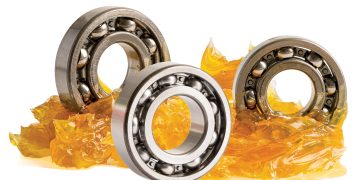Over the years, the field of automotive engineering has seen astounding changes, and an unsung hero—engine materials—is at the centre of this growth. The basic nature of automobile engines has been reinvented as a result of the steady transition from heavy, iron components to lightweight, high-performance alloys and composites. It will be fascinating to embark on an illuminating voyage through time, investigating how the
evolution of engine materials has revolutionised the way we travel, making vehicles more efficient, powerful, and sustainable.

The Iron Giants of Yesteryears
“They were like the heart of a giant, a bit cumbersome but steadfast.”
During the nascent stages of the automotive era, specifically in the late 19th century and early 20th century, the construction of car engines relied heavily on cast iron. Cast iron, known for its toughness and sturdiness, became the preferred material for engine components because of its resistance to high temperatures and mechanical stress. Even while they were powerful, these cast iron engines had a significant flaw: they were incredibly heavy. The heavier engines struggled to produce adequate acceleration and speed while requiring higher fuel inputs.
The introduction of innovative automobile types like the Ford Model T, Renault Type B, and Benz Patent-Motorwagen defined this era. Despite having engines that would be seen as heavy by modern standards, these cars represented the start of a transformational journey.
Aluminium’s Arrival and the Dawn of Efficiency
“Aluminium gave engines wings. It was like shedding the excess baggage while gaining wingspan.”
As the 1960s got underway, aluminium became a new challenger. A paradigm change was brought about by the use of aluminium alloy components in engines. A new era of weight reduction began with the switch to aluminum, which led to engines that were not only lighter but also more responsive and fuel-efficient.
Consider the legendary Porsche 911. Alumini um components replaced cast iron ones, which significantly reduced weight while also improving driving performance. Faster acceleration, better handling, and a significant increase in fuel efficiency were all made possible by the enhanced power-to-weight ratio, illustrative of the significant influence of lightweight materials.

Titanium’s Triumph in High-Performance Engineering
“Titanium is to engines what jet fuel is to planes.”
Titanium became the ideal material for high-performance engines as time went on and the industry advanced. It was used in engine components such as valves, connecting rods, and exhaust systems because of its exceptional strength-to-weight ratio and corrosion resistance. Titanium, in fact, ignited a new era of engine performance.
The McLaren F1, for example, is a supercar that redefined what was possible. Its engine used titanium components, allowing it to reach previously unheard-of speeds. The end result was a startling power output that broke records and solidified McLaren’s status as an automobile technical pioneer.
Carbon Fiber’s Artful Engineering
“Carbon fiber is the secret sauce – it’s light, strong, and looks good.”
Recently, carbon fibre composites have been included into engine components in the automotive sector. Carbon fibre has converted ordinary engine covers into works of art and intake systems into engineering wonders because it is robust, lightweight, and heat-resistant.

Take the Koenigsegg Jesko, a hypercar that redefines speed and innovation. Its extensive use of carbon fibre not only helps to save weight but also demonstrates the artistic possibilities of modern materials. The marriage of engineering and aesthetics emphasises carbon fiber’s transformational power.
Ceramic Composites and the Road Ahead
“Graphene isn’t just a material; it’s a new physics.”
The investigation of advanced ceramic composites is the next step in the exploration of engine materials. These materials are perfect for high-temperature engine components like exhaust headers and turbochargers because of their remarkable heat resistance and thermal stability. Additionally, with materials like graphene, renowned for its unrivalled strength and electrical conductivity, researchers are exploring unknown territory.
Think about the ongoing pursuit of performance in Formula 1. To resist the intense heat produced during racing, teams like Mercedes-AMG Petronas Formula One have been researching ceramics for engine components. These developments highlight the importance of material innovation in pushing the performance envelope in addition to engine efficiency.

Conclusion: A Progress and Power Symphony
The history of engine materials demonstrates the automobile industry’s endless spirit of invention. As we progress through time, we see the transition from iron to aluminium, titanium, carbon fibre, ceramics, and graphene. Each substance has left an indelible imprint on engines, and hence on the fundamental core of driving.
The progress symphony continues, with engines changing to satisfy our expectations of power, efficiency, and sustainability. This stealthy revolution under the hood follows the trend of scientific progress and human inventiveness, moving us towards a future in which automobiles transcend their utilitarian function. They become emblems of progress, fuelled by the never-ending pursuit of better materials, better engines, and an unrivalled driving experience. The promise of innovation illuminates the path forward, where the evolution of engine materials will continue to propel us forward.
– Mahesh kallayil



























































